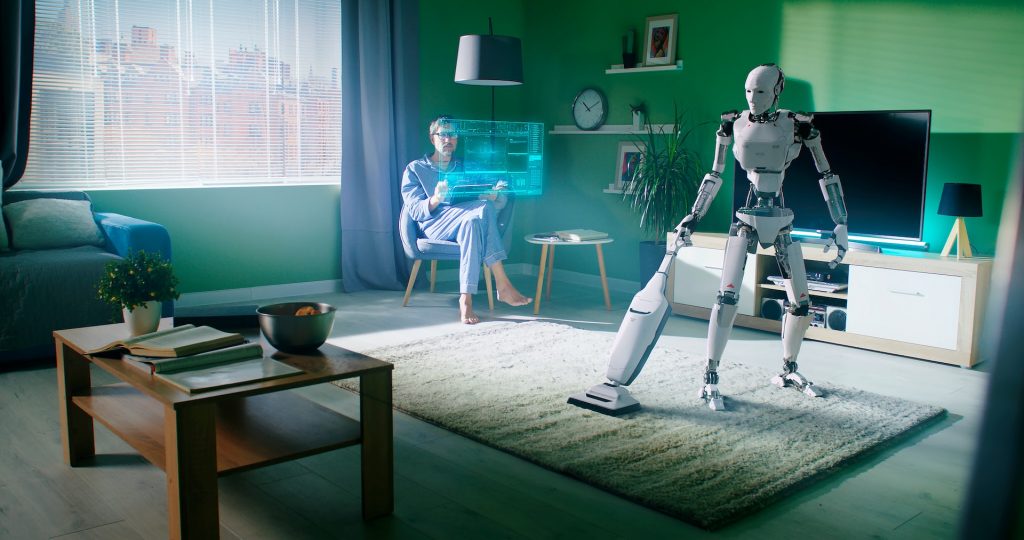Robot Talk Episode 47 – Helmut Hauser

Claire chatted to Helmut Hauser from the University of Bristol all about soft robotics, sensing, and smart robot bodies.
Helmut Hauser is an Associate Professor in Robotics at the University of Bristol and the Bristol Robotics Laboratory. He is also the Director of the EPSRC Centre of Doctoral Training for Robotics and Autonomous Systems. Helmut’s research is focused on morphological computation and soft robotics. In particular, he is interested in understanding the underlying principles of how biological systems exploit their complex physical bodies to facilitate sensing, controlling and learning, and how these principles can be employed to design better bodies to build better robots.
Scurrying centipedes inspire many-legged robots that can traverse difficult landscapes
An architecture to coordinate the behavior of different robots in a team
Choosing a Robotic Spindle for Deburring
India’s robot boom hits all-time high
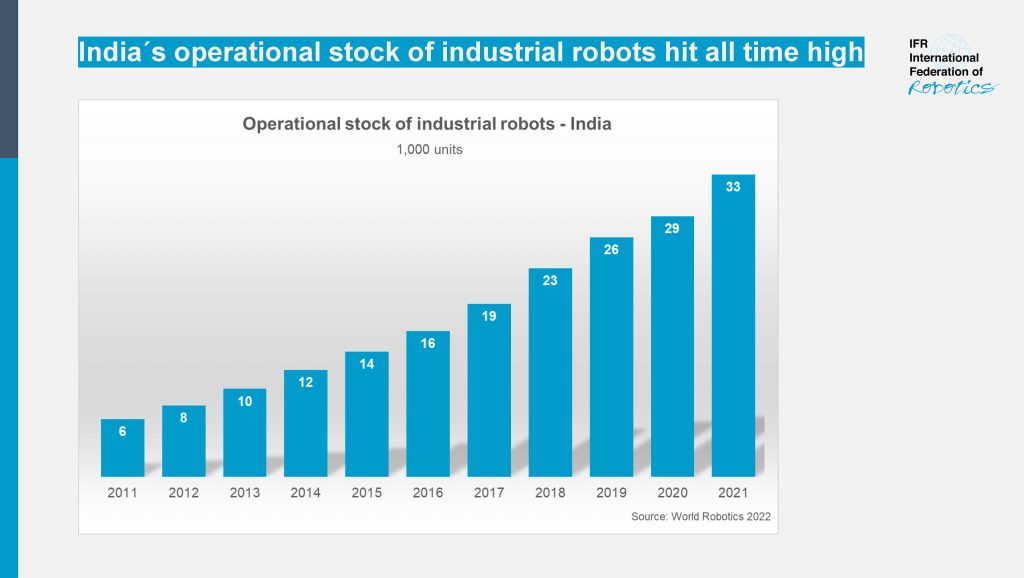
India´s operational stock of industrial robots hit all time high.
Sales of industrial robots in India reached a new record of 4,945 units installed. This is an increase of 54 percent compared to the previous year (2020: 3,215 units). In terms of annual installations, India now ranks in tenth position worldwide. These are findings of the report World Robotics, presented by the International Federation of Robotics (IFR).
“India is one of the world’s fastest-growing industrial economies,” says Marina Bill, President of the International Federation of Robotics. “Within five years, the operational stock of industrial robots has more than doubled, to reach 33,220 units in 2021. This corresponds to an average annual growth rate of 16% since 2016.”
Today, India is the world’s fifth largest economy measured by manufacturing output. According to World Bank data, India´s manufacturing value added in 2021 was USD 443.9 billion, a 21.6% increase from 2020.
The automotive industry remains the largest customer for the robotics industry in India with a share of 31% in 2021. Installations more than doubled to 1,547 units (+108%). The general industry in India is led by the metal industry with 308 units (-9%), the rubber and plastics industry with 246 units (+27%) and the electrical/electronics industry with 215 units (+98%).
Impressive potential for India
The long-term potential of robotics in India becomes clearer when compared to China: India´s robot density in the automotive industry, which is the number of industrial robots per 10,000 employees, reached 148 robots in 2021. China´s robot density hit 131 units in 2010 and skyrocketed to 772 units in 2021.
The Indian government supports growth in the industrial sector as one of the vital figures that affect the Gross Domestic Product (GDP). Today, the country´s GDP of about USD 3 trillion ranks in fifth place, head-to-head with the UK and France – behind Germany, Japan, China and the USA – the International Monetary Fund reports.
Outlook for India
“As a result of the recent supply chain disruption, companies are rethinking their nearshoring strategies in Southeast Asia,” says Marina Bill. “India has traditionally been a popular destination for nearshoring in the manufacturing segment. The Indian government wants the country to be considered for new diversification options such as friendshoring, which is partnering with countries that share similar values and interests.”
The manufacturing sector is also expected to benefit from the government’s initiatives to boost its competitiveness and attractiveness for investors. The Production Linked Incentive (PLI) scheme, for example, currently set to run until 2025, subsidizes companies that create production capacity in India in robot customer industries like automotive, metal, pharmaceuticals, and food processing.
Robots help to create new jobs
New manufacturing capacities in India are an important step to provide adequate education and employment opportunities for its people: According to projections of the United Nations, India now has a population of 1,4 billion, surpassing China for the first time. This means that India has a large and young workforce that can drive economic growth and innovation. India is expected to have the largest working-age population in the world by 2027.
A new hydrogel-based skin with tactile sensing capabilities
An Introduction To Plug-and-Play Motion Subsystems
Knocked down but not defeated: Robots learn soccer
Open-source platform simulates wildlife for soft robotics designers
Talking AUTOMATE 2023 with ATI
Novel system uses reinforcement learning to teach robotic cars to speed
Robot fish makes splash with motion breakthrough
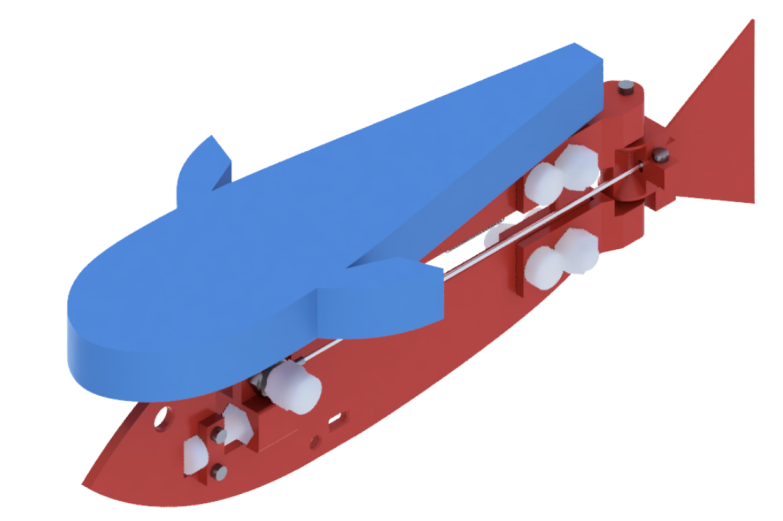
Robot fish. Image credit: Tsam Lung You
The robot fish was fitted with a twisted and coiled polymer (TCP) to drive it forward, a light-weight low cost device that relies on temperature change to generate movement, which also limits its speed.
A TCP works by contracting like muscles when heated, converting the energy into mechanical motion. The TCP used in this work is warmed by Joule heating – the pass of current through an electrical conductor produces thermal energy and heats up the conductor. By minimising the distance between the TCP on one side of the robot fish and the spring on the other, this activates the fin at the rear, enabling the robot fish to reach new speeds. The undulating flapping of its rear fin was measured at a frequency of 2Hz, two waves per second. The frequency of the electric current is the same as the frequency of tail flap.
The findings, published at the 6th IEEE-RAS International Conference on Soft Robotics (RoboSoft 2023), provide a new route to raising the actuation – the action of causing a machine or device to operate – frequency of TCPs through thermomechanical design and shows the possibility of using TCPs at high frequency in aqueous environments.
Lead author Tsam Lung You from Bristol’s Department of Engineering Mathematics said: “Twisted and coiled polymer (TCP) actuator is a promising novel actuator, exhibiting attractive properties of light weight, low-cost high energy density and simple fabrication process.
“They can be made from very easily assessable materials such as a fishing line and they contract and provide linear actuation when heated up. However, because of the time needed for heat dissipation during the relaxation phase, this makes them slow.”
By optimising the structural design of the TCP-spring antagonistic muscle pair and bringing their anchor points closer together, it allowed the posterior fin to swing at a larger angle for the same amount of TCP actuation.
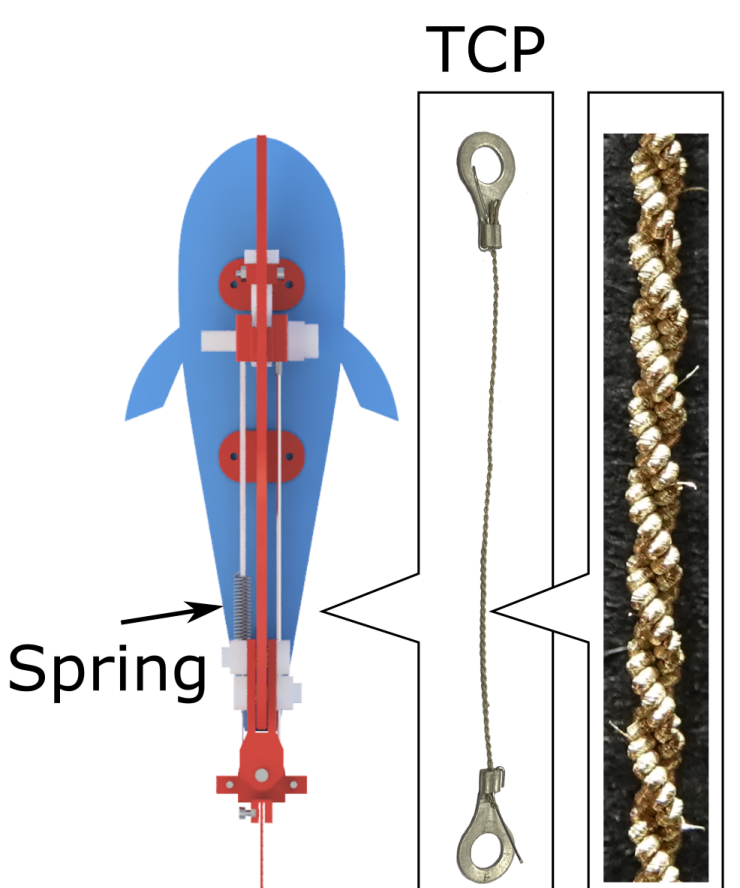
Antagonistic muscles. Image credit: Tsam Lung You
Although this requires greater force, TCP is a strong actuator with high work energy density, and is still able to drive the fin.
Until now, TCPs have been mostly used for applications such as wearable devices and robotic hands. This work opens up more areas of application where TCP can be used, such as marine robots for underwater exploration and monitoring.
Tsam Lung You added: “Our robotic fish swam at the fastest actuation frequency found in a real TCP application and also the highest locomotion speed of a TCP application so far.
“This is really exciting as it opens up more opportunities of TCP application in different areas.”
The team now plan to expand the scale and develop a knifefish-inspired TCP-driven ribbon fin robot that can swim agilely in water.
NCCR Robotics: A documentary
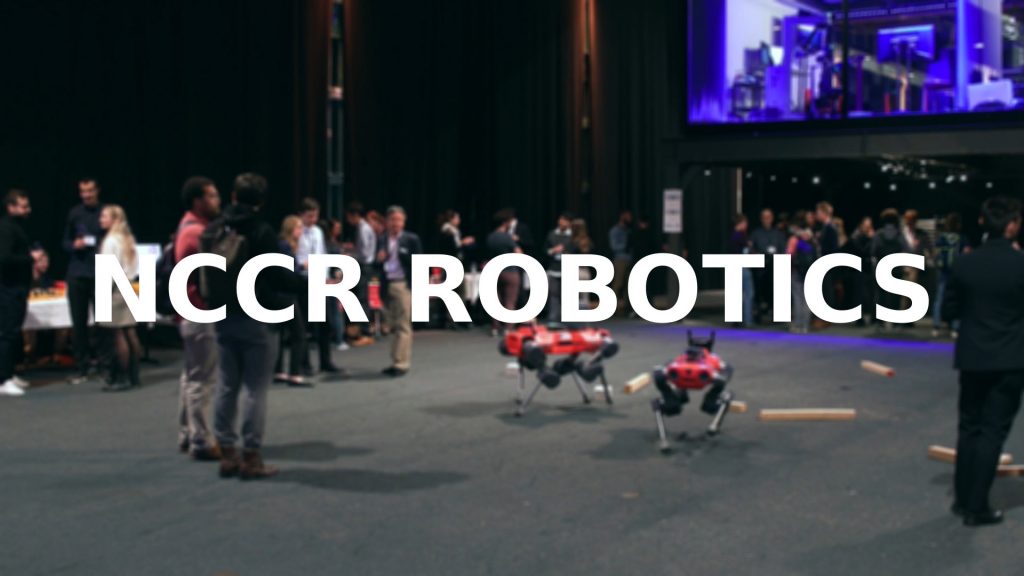
This short film documents some of the most innovative projects that emerged from the work of NCCR Robotics, the Swiss-wide consortium coordinated from 2010 to 2022 by EPFL professor Dario Floreano and ETHZ professor Robert Riener, including other major research institutions across Switzerland.
Shot over the course of six months in Lausanne, Geneva, Zurich, Wangen an der Aare, Leysin, Lugano, the documentary is a unique look at the state of the art of medical, educational and rescue robotics, and at the specific contributions that Swiss researchers have given to the field over the last decade. In addition to showing the robots in action, the film features extended interviews with top experts including Stéphanie Lacour, Silvestro Micera, Davide Scaramuzza, Robert Riener, Pierre Dillenbourg, Margarita Chli, Dario Floreano.
Produced by NCCR Robotics and Viven.
We need to discuss what jobs robots should do, before the decision is made for us
By Thusha Rajendran (Professor of Psychology, The National Robotarium, Heriot-Watt University)
The social separation imposed by the pandemic led us to rely on technology to an extent we might never have imagined – from Teams and Zoom to online banking and vaccine status apps.
Now, society faces an increasing number of decisions about our relationship with technology. For example, do we want our workforce needs fulfilled by automation, migrant workers, or an increased birth rate?
In the coming years, we will also need to balance technological innovation with people’s wellbeing – both in terms of the work they do and the social support they receive.
And there is the question of trust. When humans should trust robots, and vice versa, is a question our Trust Node team is researching as part of the UKRI Trustworthy Autonomous Systems hub. We want to better understand human-robot interactions – based on an individual’s propensity to trust others, the type of robot, and the nature of the task. This, and projects like it, could ultimately help inform robot design.
This is an important time to discuss what roles we want robots and AI to take in our collective future – before decisions are taken that may prove hard to reverse. One way to frame this dialogue is to think about the various roles robots can fulfill.
Robots as our servants
The word “robot” was first used by the Czech writer, Karel Čapek, in his 1920 sci-fi play Rossum’s Universal Robots. It comes from the word “robota”, meaning to do the drudgery or donkey work. This etymology suggests robots exist to do work that humans would rather not. And there should be no obvious controversy, for example, in tasking robots to maintain nuclear power plants or repair offshore wind farms.
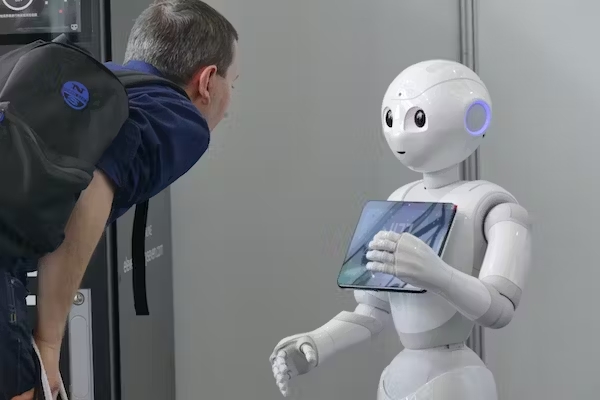
The more human a robot looks, the more we trust it. Antonello Marangi/Shutterstock
However, some service tasks assigned to robots are more controversial, because they could be seen as taking jobs from humans.
For example, studies show that people who have lost movement in their upper limbs could benefit from robot-assisted dressing. But this could be seen as automating tasks that nurses currently perform. Equally, it could free up time for nurses and careworkers – currently sectors that are very short-staffed – to focus on other tasks that require more sophisticated human input.
Authority figures
The dystopian 1987 film Robocop imagined the future of law enforcement as autonomous, privatised, and delegated to cyborgs or robots.
Today, some elements of this vision are not so far away: the San Francisco Police Department has considered deploying robots – albeit under direct human control – to kill dangerous suspects.
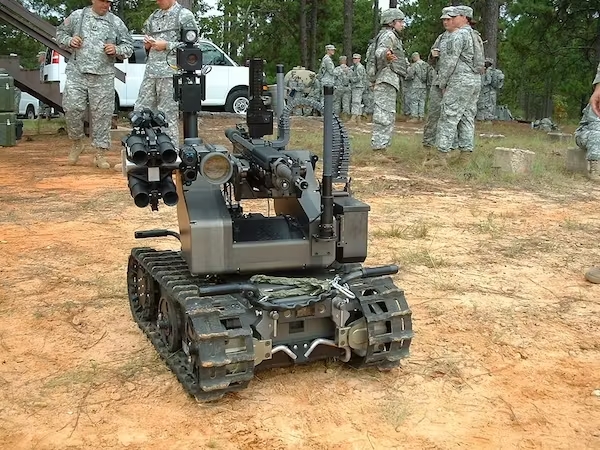
This US military robot is fitted with a machine gun to turn it into a remote weapons platform. US Army
But having robots as authority figures needs careful consideration, as research has shown that humans can place excessive trust in them.
In one experiment, a “fire robot” was assigned to evacuate people from a building during a simulated blaze. All 26 participants dutifully followed the robot, even though half had previously seen the robot perform poorly in a navigation task.
Robots as our companions
It might be difficult to imagine that a human-robot attachment would have the same quality as that between humans or with a pet. However, increasing levels of loneliness in society might mean that for some people, having a non-human companion is better than nothing.
The Paro Robot is one of the most commercially successful companion robots to date – and is designed to look like a baby harp seal. Yet research suggests that the more human a robot looks, the more we trust it.
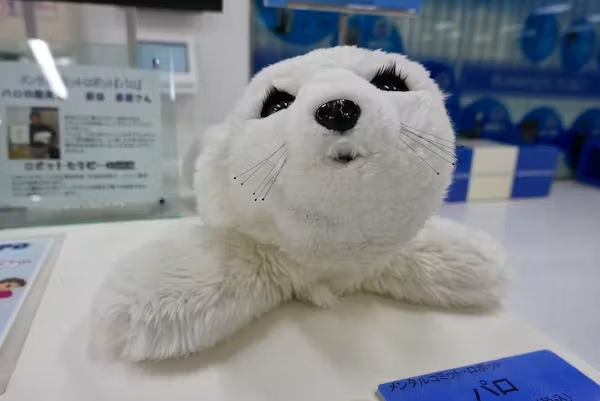
The Paro companion robot is designed to look like a baby seal. Angela Ostafichuk / Shutterstock
A study has also shown that different areas of the brain are activated when humans interact with either another human or a robot. This suggests our brains may recognise interactions with a robot differently from human ones.
Creating useful robot companions involves a complex interplay of computer science, engineering and psychology. A robot pet might be ideal for someone who is not physically able to take a dog for its exercise. It might also be able to detect falls and remind someone to take their medication.
How we tackle social isolation, however, raises questions for us as a society. Some might regard efforts to “solve” loneliness with technology as the wrong solution for this pervasive problem.
What can robotics and AI teach us?
Music is a source of interesting observations about the differences between human and robotic talents. Committing errors in the way humans do all the time, but robots might not, appears to be a vital component of creativity.
A study by Adrian Hazzard and colleagues pitted professional pianists against an autonomous disklavier (an automated piano with keys that move as if played by an invisible pianist). The researchers discovered that, eventually, the pianists made mistakes. But they did so in ways that were interesting to humans listening to the performance.
This concept of “aesthetic failure” can also be applied to how we live our lives. It offers a powerful counter-narrative to the idealistic and perfectionist messages we constantly receive through television and social media – on everything from physical appearance to career and relationships.
As a species, we are approaching many crossroads, including how to respond to climate change, gene editing, and the role of robotics and AI. However, these dilemmas are also opportunities. AI and robotics can mirror our less-appealing characteristics, such as gender and racial biases. But they can also free us from drudgery and highlight unique and appealing qualities, such as our creativity.
We are in the driving seat when it comes to our relationship with robots – nothing is set in stone, yet. But to make educated, informed choices, we need to learn to ask the right questions, starting with: what do we actually want robots to do for us?
Thusha Rajendran receives funding from the UKRI and EU. He would like to acknowledge evolutionary anthropologist Anna Machin’s contribution to this article through her book Why We Love, personal communications and draft review.
This article is republished from The Conversation under a Creative Commons license. Read the original article.
